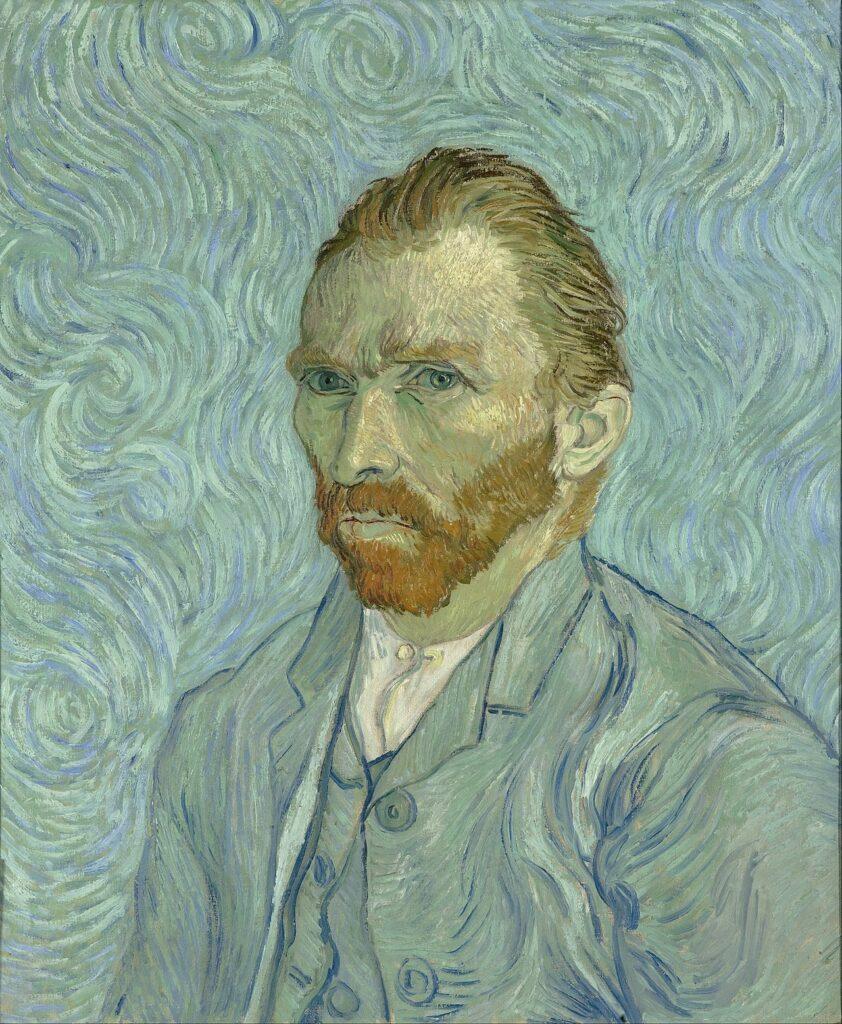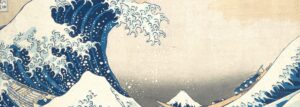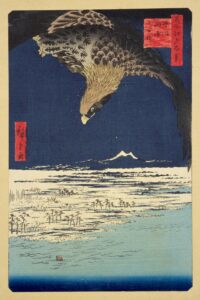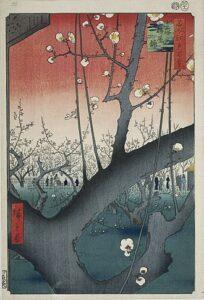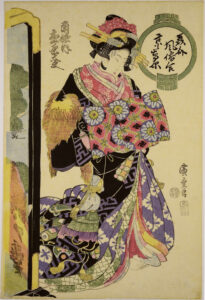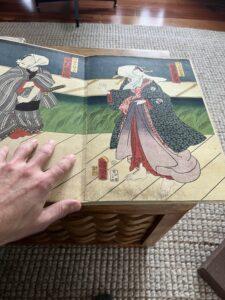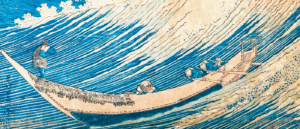Japaneserie: Vincent Van Gogh and Hiroshige, a fusion of Japanese Ukiyo-e (Woodblock art) with Impressionism of the West.
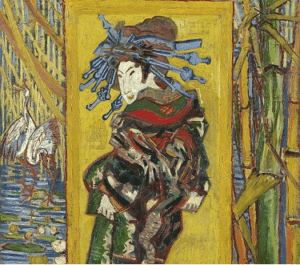
The Courtesan, 1887 [2]
Take a long hard look at this Van Gogh painting, The Courtesan. What do you see, aside from the fact that the painting has a woman in it? Notice how there’s something weird happening in the background. A blend of very bright colors, fractal patterns and certain elements of nature here and there. Not very realistic really, but definitely popping out and leaving an impression, am I right? What you’re looking at is a semi-recreation of one of Utagawa Hiroshige’s woodblock art paintings by none other than the renowned Dutch artist Vincent Van Gogh. In his own words:
“All my work is based to some extent on Japanese art..” -Van Gogh [2]
Although he never visited Japan himself, the artist’s love for the Japanese Ukiyo-e, or woodblock art was an obsession of sorts. The artist went around and collected at least 600 known pieces of Japanese art, including twelve prints from Hiroshige‘s series One Hundred Famous Views of Edo[3]. As a tribute to his favorite Japanese artist and the last of his kind, Van Gogh made replicas of several of Hiroshige’s woodblock art paintings in oil.
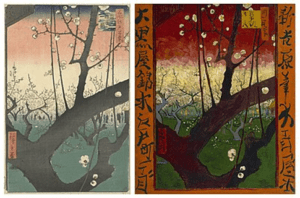
Plump Orchard in Kamada, No.27 in 100 Famous Views in Edo[2]
Right: Hiroshige woodblock art, Left: Van Gogh oil painting
Van Gogh made sure to retain the original artist’s central idea, by maintaining the theme with great detail. Nevertheless, the two images, even though eerily similar, have completely different impressions at first glance, don’t they? That’s where Western impressionist art meets the Japanese Ukiyo-e in its full glory.
While Van Gogh moved on from simply copying Hiroshige’s paintings pretty soon after, his love for Japanese art completely revamped his style of painting. Let’s see for ourselves:
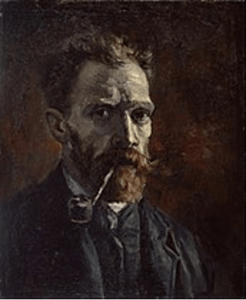
Self-portrait with a Pipe, 1886[4]
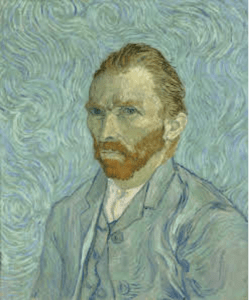
The Oslo Self-portrait 1889[4]
Although only three years apart, these two self-portraits by Van Gogh look nothing alike in their style. What you’re looking at are the pre- and post-Japaneserie versions of a Vincent Van Gogh portrait. Simply put, the 1889 portrait is what Van Gogh oil painted after his exposure to Japanese Ukiyo-e. Bright colors, delicate and intricate patterns, and an impression of nature that seems more like a fantastical illustration conveying the earth’s beauty in all its glory instead of reality, that’s what Japanese woodblock art brought into Europe ever since the 1860s when the Great Wave Off Kanagawa by Katsushika Hokusai made its way out in the world[1].
Giving the Japanese artists due credit for their remarkable influence on Impressionism, Van Gogh once wrote in a letter to his brother Theo in 1888:
“About staying in the south, even if it’s more expensive—Look, we love Japanese painting, we’ve experienced its influence—all the Impressionists have that in common—[so why not go to Japan], in other words, to what is the equivalent of Japan, the south? So I believe that the future of the new art still lies in the south after all.” [1]
Unfortunately, Van Gogh’s dream of merging impressionism of the West with Japanese Ukiyo-e did not get off the ground during his lifetime. Nevertheless, his woodblock-inspired paintings are still on display in the Van Gogh Museum Amsterdam[4] and are one of the sources that are keeping the 1800s Japanese painter Hiroshige alive today too.
Bibliography
[1] Chafin, J. (2017, December 7). Hiroshige: One Hundred famous views of Edo: A luscious — and affordable — must-have art book. HuffPost. Retrieved October 6, 2022, from https://www.huffpost.com/entry/hiroshige-one-hundred-fam_b_1097668
[2] Downer, L. (2018, May 9). Features. Historia Magazine. Retrieved October 6, 2022, from https://www.historiamag.com/van-gogh-and-japan/
[3] Inspiration from Japan. Inspiration from Japan – Van Gogh Museum. (n.d.). Retrieved October 6, 2022, from https://www.vangoghmuseum.nl/en/stories/inspiration-from-japan#0
[4] Johnson, K. (2022, May 28). Vincent van Gogh and his Japanese prints. Street Art Museum tours. Retrieved October 6, 2022, from https://streetartmuseumtours.com/2022/04/04/vincent-van-gogh-and-his-japanese-prints/

